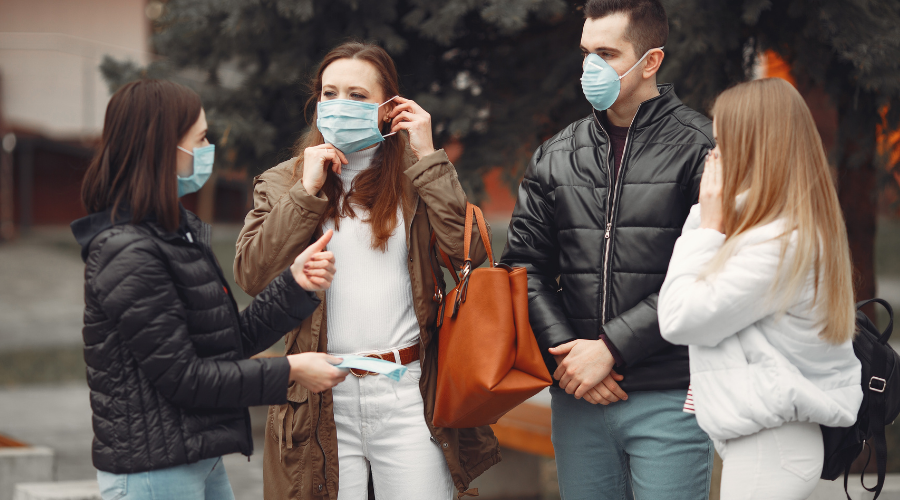How to Prevent the Spread of COVID-19 in Crowds & Queues

Monitor mask-wearing and physical distancing
It’s heartbreakingly sad to see images of long queues of people waiting in line at food banks or to receive COVID-19 tests. With the inoculation effort underway, we’ll start seeing queues to receive a COVID-19 vaccine. And, of course, there are always the more ordinary, common queues in grocery stores and mass transit stations (airport, bus, and train) – even when there is no pandemic. Today, queues and crowds are more than an inconvenience, because they pose a threat to the social/physical distancing guidelines that are so important to safeguard against the Coronavirus.
How can public and private entities protect people who must line up to receive goods or services? The logistics of administering vaccines are challenging, because virtually everyone in the world should be vaccinated, but can’t be vaccinated all at once. Phased immunization programs will be conducted based on various criteria, such as age, health, occupation, and geographic location. These vaccine programs will require extraordinary infrastructure logistics (Temporary field hospitals may be required if pharmacies, hospitals, and doctor’s offices can’t handle the volume of patients.) The programs will also require appointment scheduling technology and the personnel to set appointments, not to mention additional medical staff to administer the vaccines to millions of people as soon as possible.
Technology solutions are emerging every day to enhance efforts to keep people distanced, safe, and well. Video intelligence software is one example of technology that can play an important role in helping people stay safe during this process. Whenever and wherever people congregate in long lines, agencies should enforce and monitor face masks and social distancing. However, it can be difficult to have enough staff resources to do that. That is where is where it makes sense to leverage an existing technology to assist in the effort: Video surveillance (CCTV) cameras are common throughout public and private facilities, because so many security teams, police departments and municipal agencies have deployed cameras. By pairing those CCTV networks with video analytics software, operators can detect individual instances of face mask or distancing violations, in real-time, and collect anonymous long-term data about how many people in queues are complying with the face mask and distancing mandates.
How does video intelligence software detect masks or social distancing?
Powered by Artificial Intelligence and Deep Learning, video intelligence software extracts, classifies, recognizes, and indexes objects and behaviors that are captured by video cameras. With object classification, the software can detect whether someone is wearing a mask; and, with proximity identification, it can detect whether someone is standing at least six feet from another person. It can also detect crowd formation and count the number of persons who have entered or exited a defined space, across multiple cameras in a facility. It can send real-time alerts when someone violates the rule, but it can also generate anonymous reports that show long-term data on how frequently and when violations typically occur. Those trend reports (peak visit hours, for instance) can help managers plan adequate staffing to help reduce crowding and traffic bottlenecks.
It would be ironic if the very programs that are meant to help people during the pandemic accidentally created the conditions that are conducive to spreading coronavirus. Both government and private sector organizations can take steps now to monitor crowds and queues, so that they can keep their constituents and customers safe while standing in line for groceries, food, a subway train, or a COVID vaccine.
More on video analytics for hospitality and entertainment here.
Signup to receive a monthly blog digest.